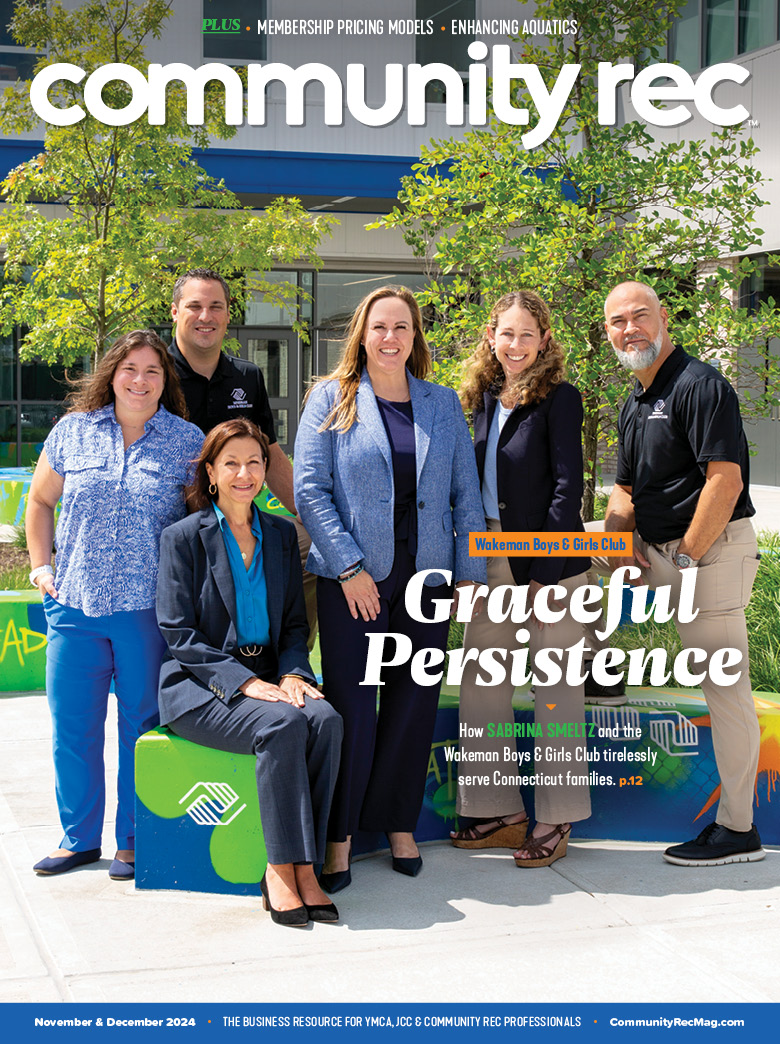Lauren Burgoyne, the director of marketing and communications for the YMCA of Southern Arizona, shares about their post-COVID marketing strategy.
While enduring month-long shutdowns, marketing was — and still is — a vital way to communicate to members.
We sat down with Lauren Burgoyne, the director of marketing and communications for the YMCA of Southern Arizona, to learn how their marketing strategy has changed since COVID-19 and what works for them.
What is your facility’s most effective marketing strategy today?
Storytelling is at the epicenter of our strategy. Through photos, videos and live broadcasts we connect our audience with the real-life superheroes who walk through our doors every day. We want to help every member of our community reach their fullest potential. In order to do that we must demonstrate our impact by sharing real stories. We leverage our reach by creating partnerships and utilizing a variety of mediums.
What works better for your facility: traditional marketing or social media? Which do you prefer?
The YMCA of Southern Arizona serves a highly diversified group of people that represent a kaleidoscope of ages, backgrounds and experiences. Since our audience is not easily definable, we use a multi-prong approach that combines traditional marketing and digital marketing. I think each has its benefits. However, I prefer digital marketing, for a few reasons:
- There is data and metrics available. You don’t have to guess how many people viewed your ad, story or post because the numbers are right there for you. Social media also provides a platform for A/B testing so you can experiment with your messaging. If people have questions or comments, you can respond to them in real-time through the social media platform.
- You can connect with your audience on a more personal level. Through Facebook Live, Instagram Reels, etc., you can invite your audience into your building, classes and programs at any time of day by turning your phone on and recording.
- Opportunity for collaborations. Social media makes it simple to share the impact we are achieving with our partners. We utilize “tagging” and joint “live” sessions to highlight our partnerships and grow our reach.
How has your marketing strategy changed since COVID-19?
COVID-19, and 2020 in general, provided no shortage of hardship and heartaches. Through that shared trauma we were able to bond and connect with our audience on a deeper level. Since people were quarantining at home, we made sure to increase our communication with them via social media, email campaigns, phone calls, etc. Our entire team pivoted so that we could ensure we met the most critical needs of our community. The YMCA provided childcare for essential workers, free virtual exercise classes, free outdoor community classes, and other offerings to help boost the mental, emotional and physical health of all of our community members. It was crucial that our marketing and communications plan was effective in making sure everyone had access to our programs.
How do you think marketing in the community recreation industry will evolve in the coming months?
I think we will see an increase in video and interactive content being pushed out from organizations’ platforms. Since there was a major spike in the download and usage of fitness apps in 2020, I anticipate that organizations will continue to strategize how to provide virtual content for their members via an app or other platforms.
Do you have any tips for engaging members through marketing?
I think that now is the perfect time to experiment. What is something you’ve always wanted to try but haven’t? How about incorporating more video into your strategy? Do you have a class or an event you’d like to promote?
Take few minutes and go live during that class. After the class record an interview with one of the participants and ask them what they loved about the class. Share the video on social media and tag the individual you interviewed. The person you interviewed may want to share the video with their own audience. According to Wyzowl, 66% of consumers prefer watching a video to reading about a product.
I would also explore ways to collaborate with other businesses, organizations, etc. By collaborating with other partners there is an opportunity to organically expand your reach through your partners’ networks and vice versa.
Photo credit: Vasin Lee










